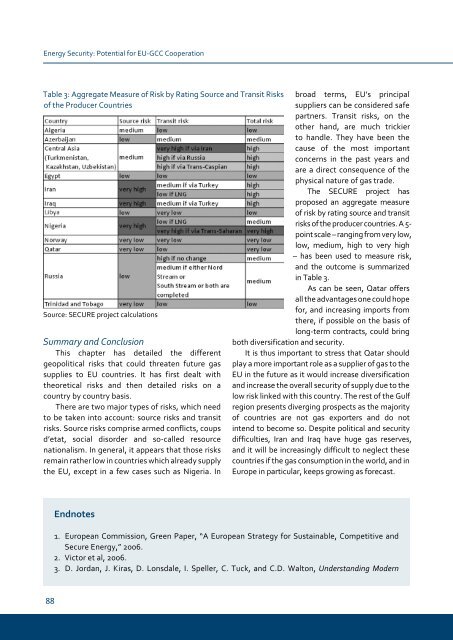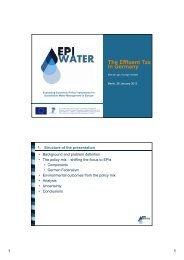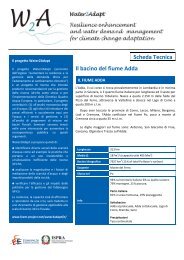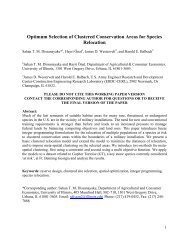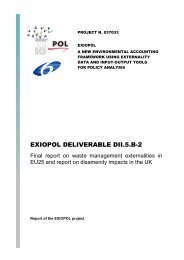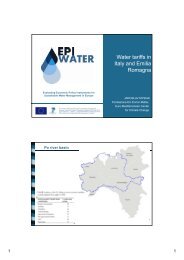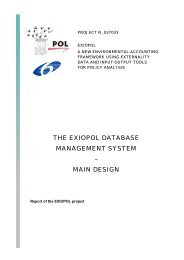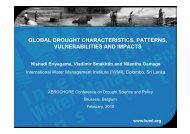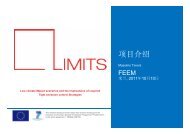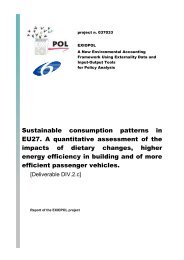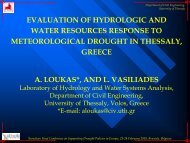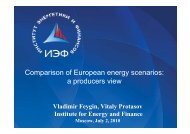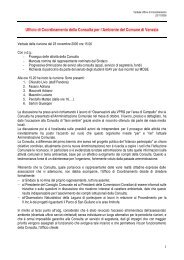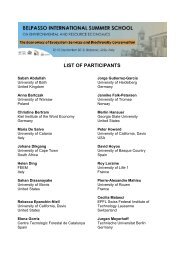Gulf and European Energy Supply Security - Feem-project.net
Gulf and European Energy Supply Security - Feem-project.net
Gulf and European Energy Supply Security - Feem-project.net
You also want an ePaper? Increase the reach of your titles
YUMPU automatically turns print PDFs into web optimized ePapers that Google loves.
<strong>Energy</strong> <strong>Security</strong>: Potential for EU-GCC Cooperation<br />
Table 3: Aggregate Measure of Risk by Rating Source <strong>and</strong> Transit Risks<br />
of the Producer Countries<br />
Source: SECURE <strong>project</strong> calculations<br />
Summary <strong>and</strong> Conclusion<br />
This chapter has detailed the different<br />
geopolitical risks that could threaten future gas<br />
supplies to EU countries. It has first dealt with<br />
theoretical risks <strong>and</strong> then detailed risks on a<br />
country by country basis.<br />
There are two major types of risks, which need<br />
to be taken into account: source risks <strong>and</strong> transit<br />
risks. Source risks comprise armed conflicts, coups<br />
d’etat, social disorder <strong>and</strong> so-called resource<br />
nationalism. In general, it appears that those risks<br />
remain rather low in countries which already supply<br />
the EU, except in a few cases such as Nigeria. In<br />
endnotes<br />
1.<br />
2.<br />
3.<br />
broad terms, EU’s principal<br />
suppliers can be considered safe<br />
partners. Transit risks, on the<br />
other h<strong>and</strong>, are much trickier<br />
to h<strong>and</strong>le. They have been the<br />
cause of the most important<br />
concerns in the past years <strong>and</strong><br />
are a direct consequence of the<br />
physical nature of gas trade.<br />
The SECURE <strong>project</strong> has<br />
proposed an aggregate measure<br />
of risk by rating source <strong>and</strong> transit<br />
risks of the producer countries. A 5point<br />
scale – ranging from very low,<br />
low, medium, high to very high<br />
– has been used to measure risk,<br />
<strong>and</strong> the outcome is summarized<br />
in Table 3.<br />
As can be seen, Qatar offers<br />
all the advantages one could hope<br />
for, <strong>and</strong> increasing imports from<br />
there, if possible on the basis of<br />
long-term contracts, could bring<br />
both diversification <strong>and</strong> security.<br />
It is thus important to stress that Qatar should<br />
play a more important role as a supplier of gas to the<br />
EU in the future as it would increase diversification<br />
<strong>and</strong> increase the overall security of supply due to the<br />
low risk linked with this country. The rest of the <strong>Gulf</strong><br />
region presents diverging prospects as the majority<br />
of countries are not gas exporters <strong>and</strong> do not<br />
intend to become so. Despite political <strong>and</strong> security<br />
difficulties, Iran <strong>and</strong> Iraq have huge gas reserves,<br />
<strong>and</strong> it will be increasingly difficult to neglect these<br />
countries if the gas consumption in the world, <strong>and</strong> in<br />
Europe in particular, keeps growing as forecast.<br />
<strong>European</strong> Commission, Green Paper, “A <strong>European</strong> Strategy for Sustainable, Competitive <strong>and</strong><br />
Secure <strong>Energy</strong>,” 2006.<br />
Victor et al, 2006.<br />
D. Jordan, J. Kiras, D. Lonsdale, I. Speller, C. Tuck, <strong>and</strong> C.D. Walton, Underst<strong>and</strong>ing Modern


